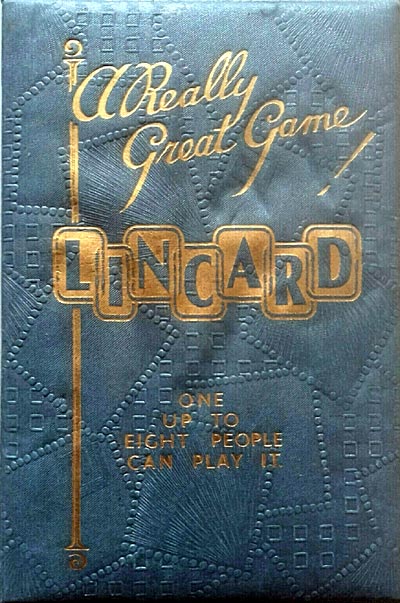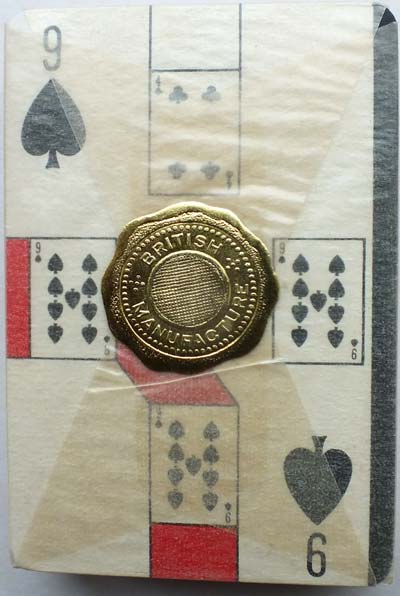Lincard
“Lincard” card game invented by John William Wolf and patented in 1937.
Lincard was invented by John William Wolf and patented in 1937. The game consists of a custom 49-card deck and the object is to play cards so that they link to other cards of the same suit, as shown in the photos below. Cards contain miniature representations of standard English playing cards along with extra graphics relating to the way this game is played.
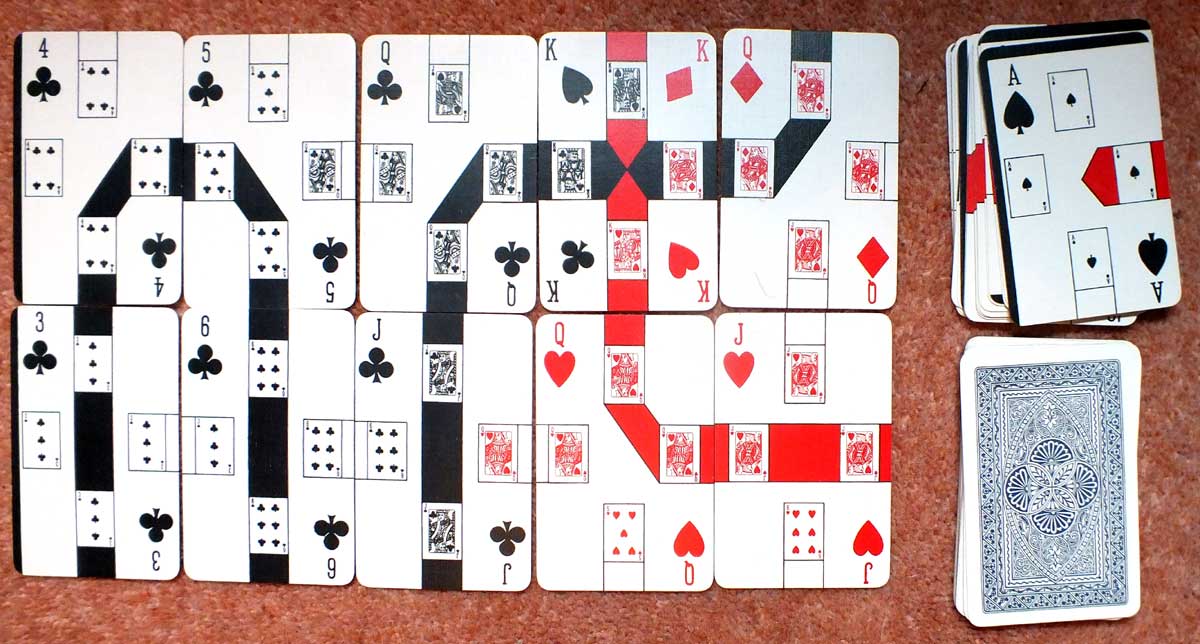
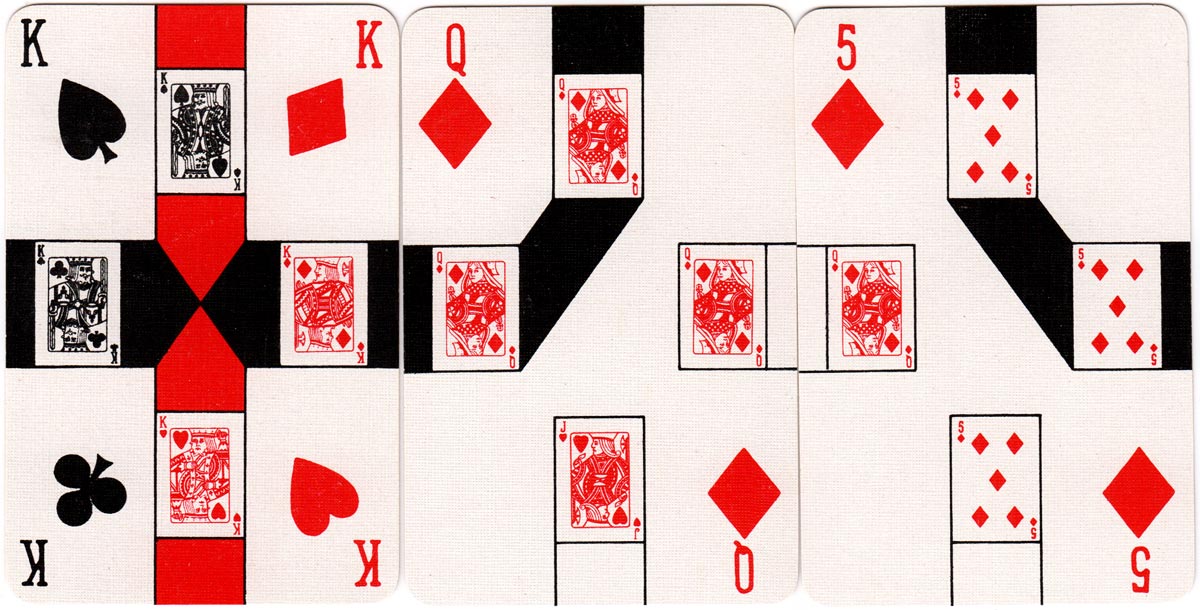
Above: “Lincard” card game invented by John William Wolf and patented in 1937. 49 cards in padded box + rules. There are no jokers. The cards were manufactured by the Universal Playing Card Co., Leeds and one of their standard back designs has been used in this pack. Seeing that there are so many tax wrapped specimens on ebay, surplus stocks may have been dumped somewhere owing to the advent of the war.
REFERENCES & CREDITS
See original patent application►
Thanks to Matt Probert for additional research.
By Simon Wintle
Spain • Member since February 01, 1996 • Contact
I am the founder of The World of Playing Cards (est. 1996), a website dedicated to the history, artistry and cultural significance of playing cards and tarot. Over the years I have researched various areas of the subject, acquired and traded collections and contributed as a committee member of the IPCS and graphics editor of The Playing-Card journal. Having lived in Chile, England, Wales, and now Spain, these experiences have shaped my work and passion for playing cards. Amongst my achievements is producing a limited-edition replica of a 17th-century English pack using woodblocks and stencils—a labour of love. Today, the World of Playing Cards is a global collaborative project, with my son Adam serving as the technical driving force behind its development. His innovative efforts have helped shape the site into the thriving hub it is today. You are warmly invited to become a contributor and share your enthusiasm.

Related Articles

Lend Me Five Shillings
or “Her Majesty’s Privy Purse” - a merry round-the-table game published by D. Ogilvy.

Laughing Made Easy
a Victorian card game published by D. Ogilvy.
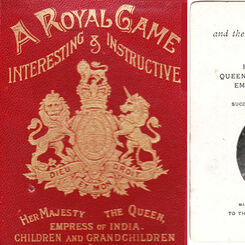
A Royal Game
A Royal Game featuring Queen Victoria’s children and extended family, published by A. Collier, Londo...
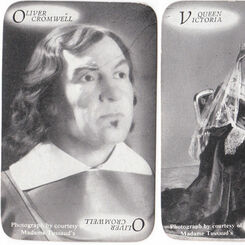
Have A Go
Have A Go card game published by Photo-Briton Ltd featuring photographs of waxwork figures from Mada...
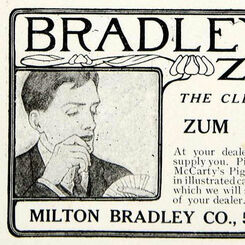
Zum
Zum card game published by Milton Bradley Co., c.1905.
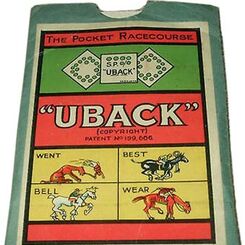
Uback
Uback horse racing game patent specification, Chad Valley Co Ltd, 1922.
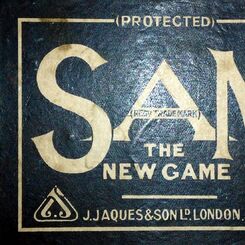
Sam
SAM by J. Jaques & Son Ltd.
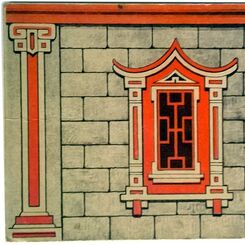
Rūfa
Rūfa is a game designed by Ernest Legh and manufactured by De la Rue. The object is to build a pagod...
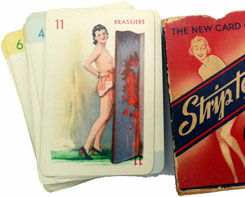
Strip Tease
‘Strip Tease’ card game featuring characters involved in the performance and subsequent prosecution ...
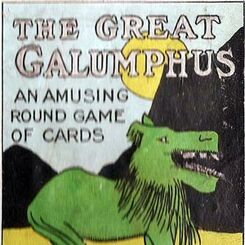
The Great Galumphus
The “Great Galumphus” card game from the 1920s shows various comic animals with their names printed ...
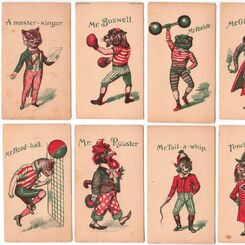
Animal Snap
The full set of this 'Snap' card game is believed to have 9 characters in sets of four, making a tot...

Old Maid
Old Maid by Clifford Toys

Old Maid No.5862
Tower Press Old Maid No.5862.
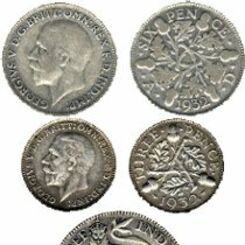
Change for a Shilling
Change for a Shilling card game by Geo. Wright & Co., London, c.1910-1926.

Kay Snap
Kay Snap Children's Card Game, made in England, 1930s.
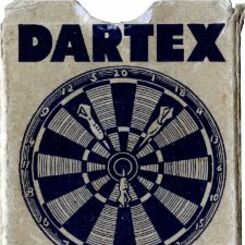
Dartex
Dartex, the Thrilling New Card Game of Skill (1938) based on the traditional pub game where darts ar...
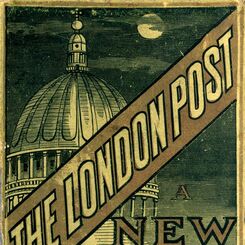
London Post
Jaques' The London Post Card Game, c.1895.
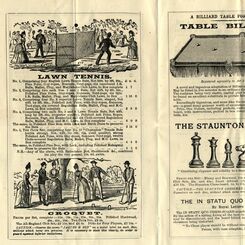
Jaques Advertising Leaflet
Jaques Advertising Leaflet showing Lawn tennis, Table Billiards, Staunton Chess, Croquet, etc.
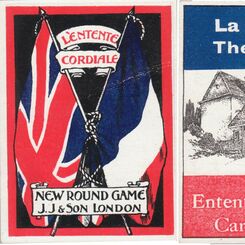
Entente Cordiale
Jaques' The Entente Cordiale Card Game, c.1905.
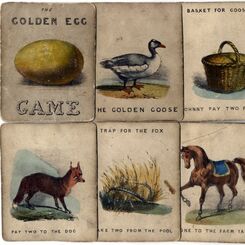
Golden Egg Game
The Golden Egg Card Game, anonymous manufacturer, c.1860
Most Popular
Our top articles from the past 60 days


